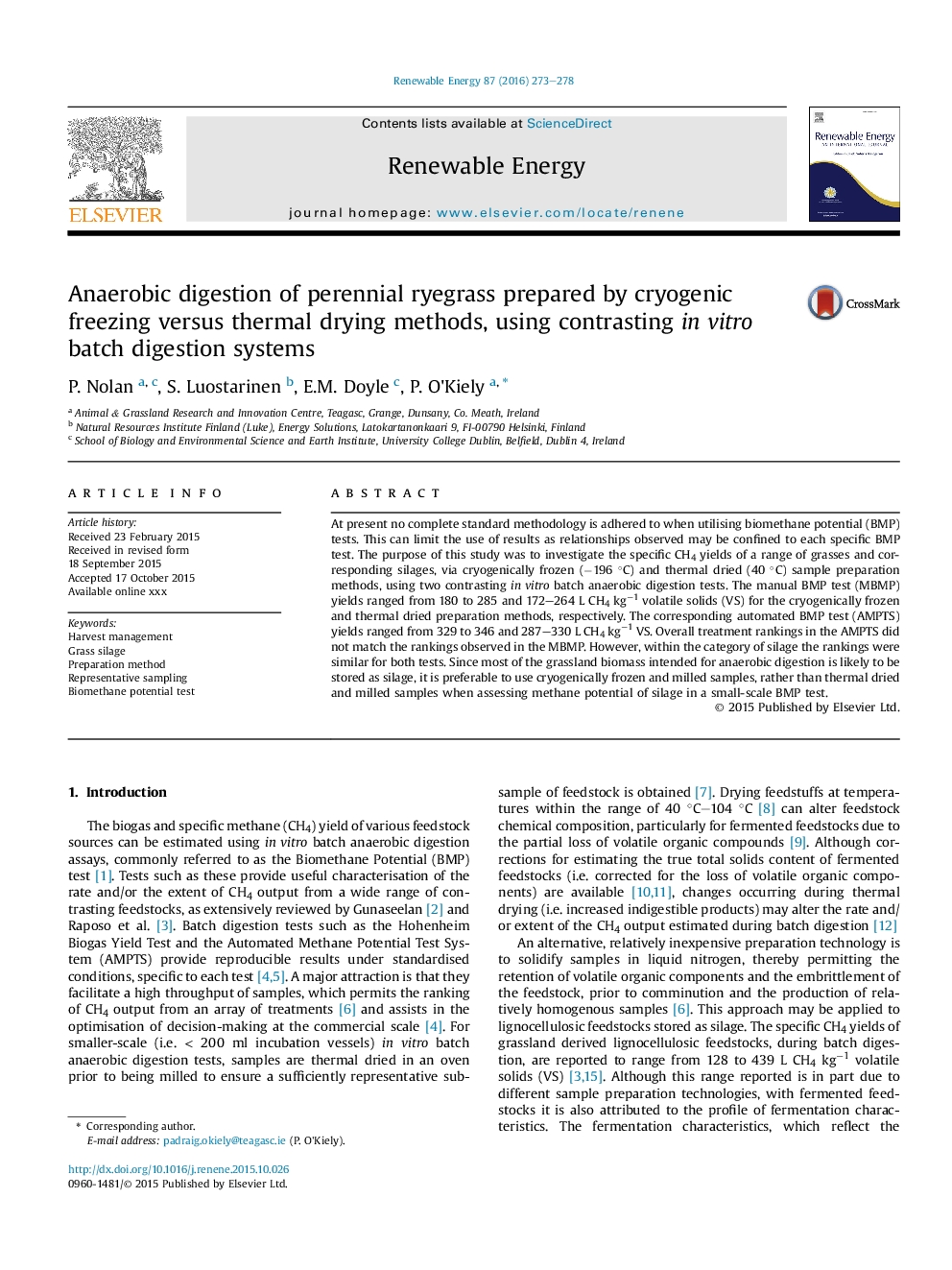| Article ID | Journal | Published Year | Pages | File Type |
|---|---|---|---|---|
| 10293968 | Renewable Energy | 2016 | 6 Pages |
Abstract
At present no complete standard methodology is adhered to when utilising biomethane potential (BMP) tests. This can limit the use of results as relationships observed may be confined to each specific BMP test. The purpose of this study was to investigate the specific CH4 yields of a range of grasses and corresponding silages, via cryogenically frozen (â196 °C) and thermal dried (40 °C) sample preparation methods, using two contrasting in vitro batch anaerobic digestion tests. The manual BMP test (MBMP) yields ranged from 180 to 285 and 172-264 L CH4 kgâ1 volatile solids (VS) for the cryogenically frozen and thermal dried preparation methods, respectively. The corresponding automated BMP test (AMPTS) yields ranged from 329 to 346 and 287-330 L CH4 kgâ1 VS. Overall treatment rankings in the AMPTS did not match the rankings observed in the MBMP. However, within the category of silage the rankings were similar for both tests. Since most of the grassland biomass intended for anaerobic digestion is likely to be stored as silage, it is preferable to use cryogenically frozen and milled samples, rather than thermal dried and milled samples when assessing methane potential of silage in a small-scale BMP test.
Related Topics
Physical Sciences and Engineering
Energy
Renewable Energy, Sustainability and the Environment
Authors
P. Nolan, S. Luostarinen, E.M. Doyle, P. O'Kiely,
